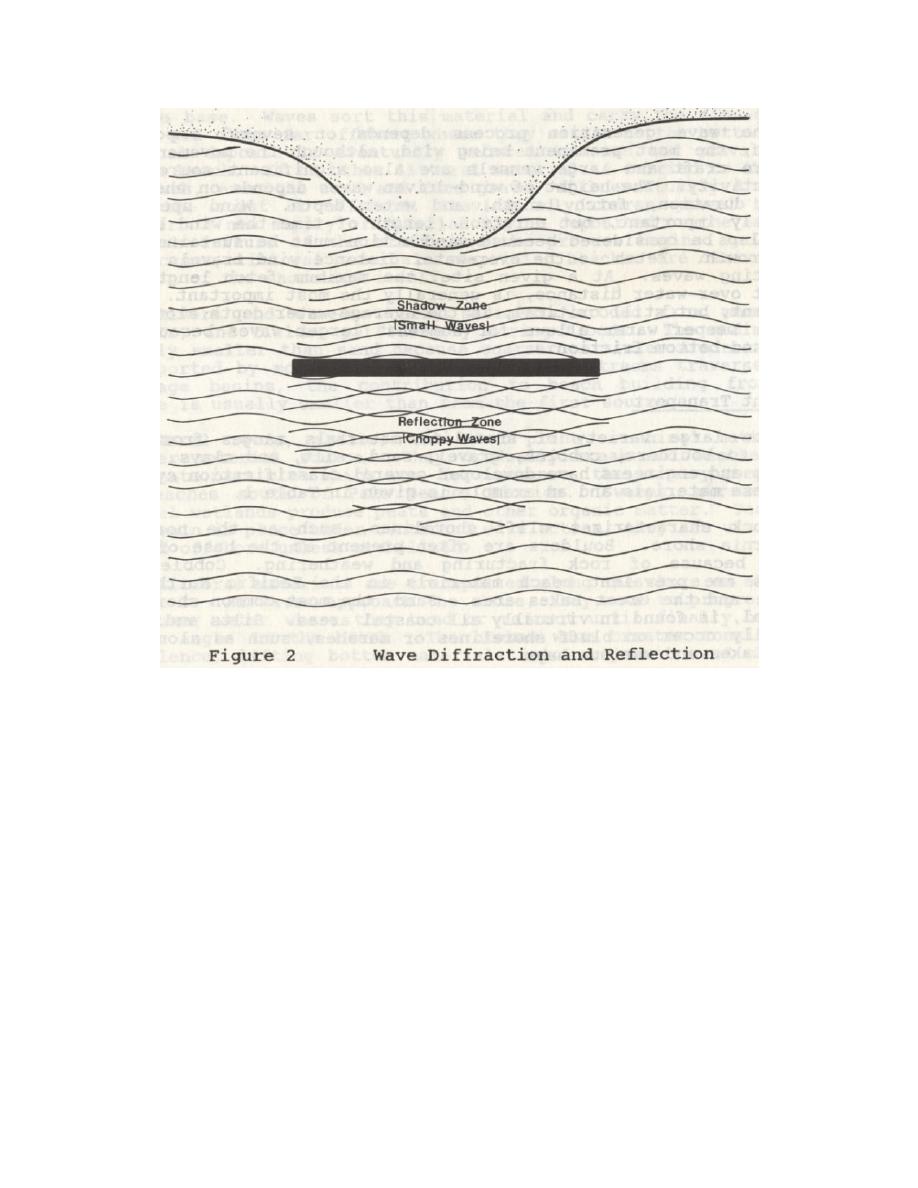
Wave reflection occurs on the offshore side of the breakwater. While waves passing the structure
are diffracted, the portions striking the breakwater are reflected like a billiard ball from a cushion. If the
structure is a smooth vertical wall, the reflection is nearly perfect, and if the wave crests are parallel with
th6 breakwater, the reflected and incoming waves will reinforce each other to form standing waves,
which are twice as high as the incoming waves. These can cause considerable scouring of the bottom. If
the waves approach at an angle, no standing waves form, but the resulting sea-state is choppy because the
reflected waves cross the path of incoming waves. This could also contribute to bottom scour.
The final important wave characteristic is evident when waves break either on a beach or
structure. The uprush of water after breaking is called runup and it expends the wave's remaining
energy. The runup height depends on the roughness and steepness of the structure or beach and the
characteristics of the wave.
The wave generation process depends on several important factors, the most prominent being
wind, although the movements of pleasure craft and large vessels are also significant sources of wave
activity. The height of wind-driven waves depends on the wind speed, duration, fetch length, and water
depth. Wind speed is obviously important, but duration (length of time the wind blows) must also be
considered because wind action must be sustained for wave growth. Fetch is the over-water distance
wind travels while generating waves. At a given site, the maximum fetch length, or longest over-water
5



 Previous Page
Previous Page
